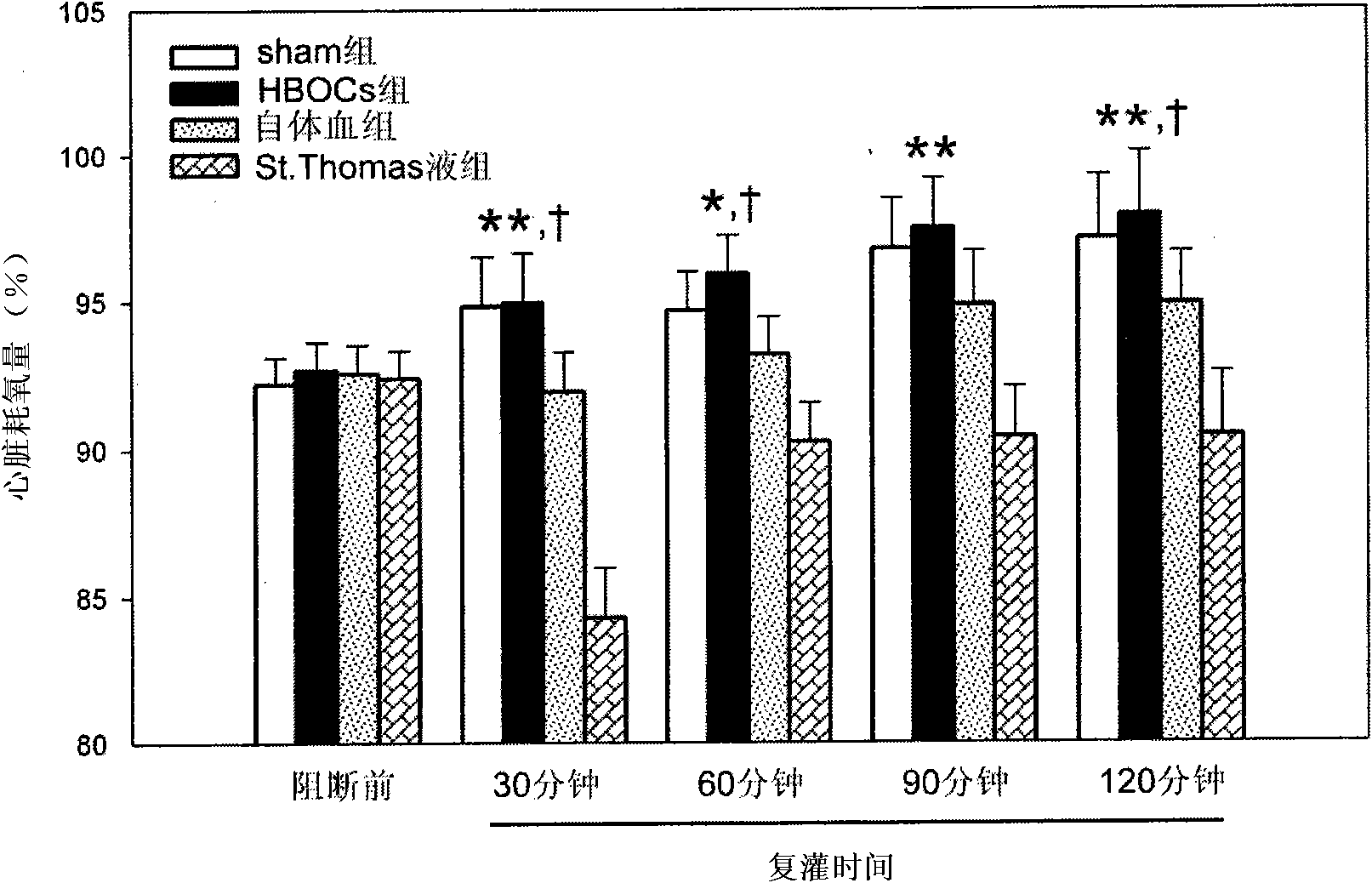Combined cardiac arrest preserving fluid, preparation method and application thereof
A technology of cardioplegia and preservation solution, which is applied in application, preservation of human or animal bodies, animal husbandry, etc., can solve the problem of weakening the cardioprotective effect of cardioplegia preservation solution, failure to show reperfusion injury, lack of systemic Regulate the immune system and other issues to achieve the effect of reducing cardiac ischemia-reperfusion injury, reducing the incidence of cardiac events, and improving the protective effect
- Summary
- Abstract
- Description
- Claims
- Application Information
AI Technical Summary
Problems solved by technology
Method used
Image
Examples
Embodiment 1
[0036] Embodiment 1: The preparation and application of the present invention's joint cardioplegia preservation solution
[0037] Under the low temperature condition of 4°C, mix one kind of HBOCs - polymerized hemoglobin and classic cardioplegia preservation solution St.Thomas solution according to the hemoglobin concentration of 0.1g / dL, and oxygenate with 100% oxygen bubbling The above mixed solution was kept for 15 minutes, then an appropriate amount of vitamin C was added according to the weight / volume ratio of 0.1g / L, and finally the pH value of the mixed solution was adjusted to 7.0-7.4 with 0.1M sodium bicarbonate solution.
[0038] The application of the above cardiac arrest preservation solution in the protection of the heart of Beagle dogs during extracorporeal circulation:
[0039] 20 experimental Beagle dogs, weighing 10-15 kg, were randomly divided into sham group, HBOCs group, autologous blood group and St. Thomas fluid group, with 5 dogs in each group. All expe...
Embodiment 2
[0048] Embodiment 2: Preparation and application of cardiac arrest preservation solution of the present invention
[0049] Under the low temperature condition of 4°C, one kind of HBOCs—polymerized hemoglobin and the classic cardioplegia preservation solution St.Thomas solution were mixed uniformly according to the hemoglobin concentration of 0.1g / dL, 0.3g / dL and 0.5g / dL respectively, and Oxygenate the above mixed solution with 95% oxygen + 5% carbon dioxide mixed gas for 15 minutes, then add an appropriate amount of vitamin C according to the weight / volume ratio of 0.1g / L, and finally adjust the pH of the mixed solution with 0.1M sodium bicarbonate solution The value is 7.0-7.4.
[0050] The application of the above cardiac arrest preservation solution in the protection of the heart of Beagle dogs during extracorporeal circulation:
[0051] 20 experimental Beagle dogs, weighing 10-15 kg, were randomly divided into St.Thomas solution group, 0.1% HBOCs group, 0.3% HBOCs group a...
Embodiment 3
[0061] Embodiment 3: The preparation and application of the present invention's joint cardioplegia preservation solution
[0062] Under the low temperature condition of 4°C, one kind of HBOCs - polymerized hemoglobin and St.Thomas solution, a classic cardioplegia preservation solution, were mixed evenly according to the hemoglobin concentration of 0.5g / dL, and 95% oxygen + 5% carbon dioxide mixed gas was blown Bubble oxygenation and oxygenation of the above mixed solution for 15 minutes, then adding an appropriate amount of vitamin C according to the weight / volume ratio of 0.1g / L, and finally adjusting the pH value of the mixed solution to 7.0-7.4 with 0.1M sodium bicarbonate solution. The preparation method of the cardioplegia preservation solution used in the control group is as follows: under the low temperature condition of 4°C, mix hemoglobin, a kind of HBOCs, and the classic cardioplegia preservation solution St.Thomas solution evenly according to the hemoglobin concentra...
PUM
| Property | Measurement | Unit |
|---|---|---|
| Concentration | aaaaa | aaaaa |
Abstract
Description
Claims
Application Information
 Login to View More
Login to View More - R&D
- Intellectual Property
- Life Sciences
- Materials
- Tech Scout
- Unparalleled Data Quality
- Higher Quality Content
- 60% Fewer Hallucinations
Browse by: Latest US Patents, China's latest patents, Technical Efficacy Thesaurus, Application Domain, Technology Topic, Popular Technical Reports.
© 2025 PatSnap. All rights reserved.Legal|Privacy policy|Modern Slavery Act Transparency Statement|Sitemap|About US| Contact US: help@patsnap.com



